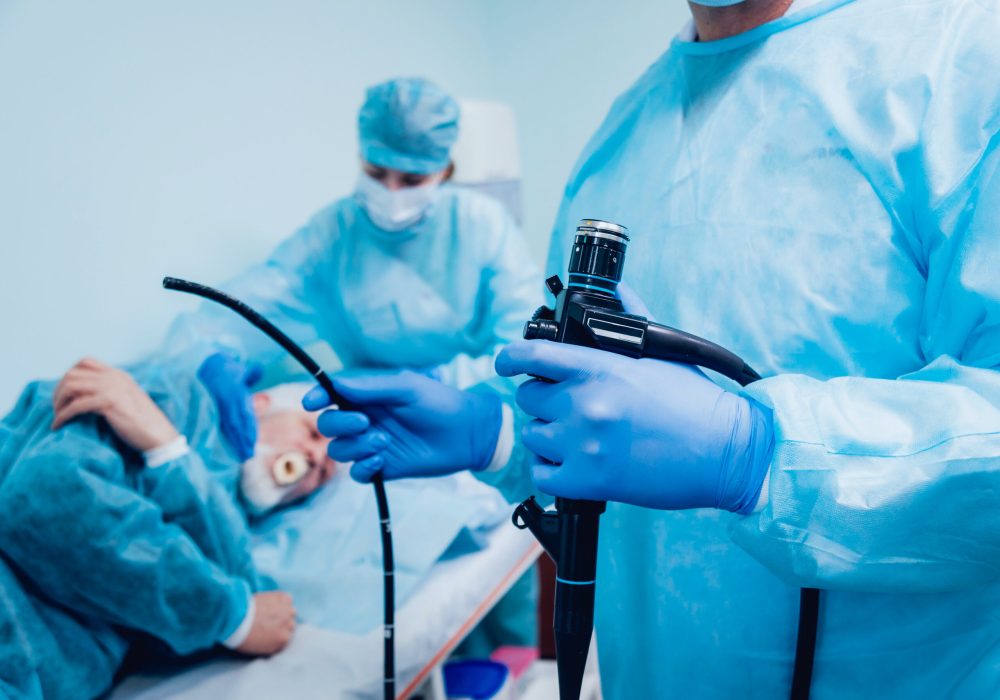Endoscopy

Endoscopy
Upper gastrointestinal (GI) endoscopy, also known as esophagogastroduodenoscopy (EGD), is a minimally invasive procedure used to examine the lining of the upper digestive tract, including the esophagus, stomach, and duodenum (the first part of the small intestine). A thin, flexible tube called an endoscope, equipped with a light and camera, is inserted through the mouth and guided down the throat, allowing doctors to visualize and assess abnormalities in real time.
Upper GI endoscopy is commonly performed to investigate symptoms such as persistent heartburn, difficulty swallowing, unexplained weight loss, nausea, vomiting, upper abdominal pain, or gastrointestinal bleeding. It can help diagnose conditions like gastroesophageal reflux disease (GERD), ulcers, celiac disease, gastritis, esophageal strictures, or cancer.
The procedure is typically done on an outpatient basis and requires little preparation apart from fasting for several hours before the test. Sedation or local anesthesia is used to ensure patient comfort. In addition to diagnostics, upper GI endoscopy can be therapeutic. Doctors can perform biopsies, remove foreign objects, dilate narrowed areas, stop bleeding, or remove abnormal growths such as polyps.
The procedure is considered safe, with a low risk of complications such as bleeding, infection, or perforation. Most patients recover quickly and can resume normal activities within a day.
Advances in endoscopic technology, such as high-definition imaging and narrow-band imaging, have improved the accuracy and effectiveness of the procedure. Upper GI endoscopy plays a vital role in modern medicine, providing a direct and detailed view of the upper digestive tract to aid in early diagnosis, treatment, and disease prevention. Regular endoscopic evaluations are recommended for individuals with certain risk factors, ensuring better long-term gastrointestinal health.
Most endoscopies are not painful. Sedatives are often used to help patients relax and feel comfortable during the procedure. Some people may experience mild discomfort or pressure.
- The duration of an endoscopy varies depending on the type of procedure and whether any additional interventions are performed. It can range from 15 minutes to an hour or more.
While generally safe, endoscopy carries some risks, including:
- Bleeding.
- Infection.
- Perforation (a tear in the lining of the digestive tract).
- Reactions to sedation
After the procedure, you may feel drowsy from the sedation. You may also experience mild bloating or cramping. It is important that someone drive you home.
The doctor may give you preliminary results immediately after the procedure. If biopsies were taken, the results may take several days or weeks.

